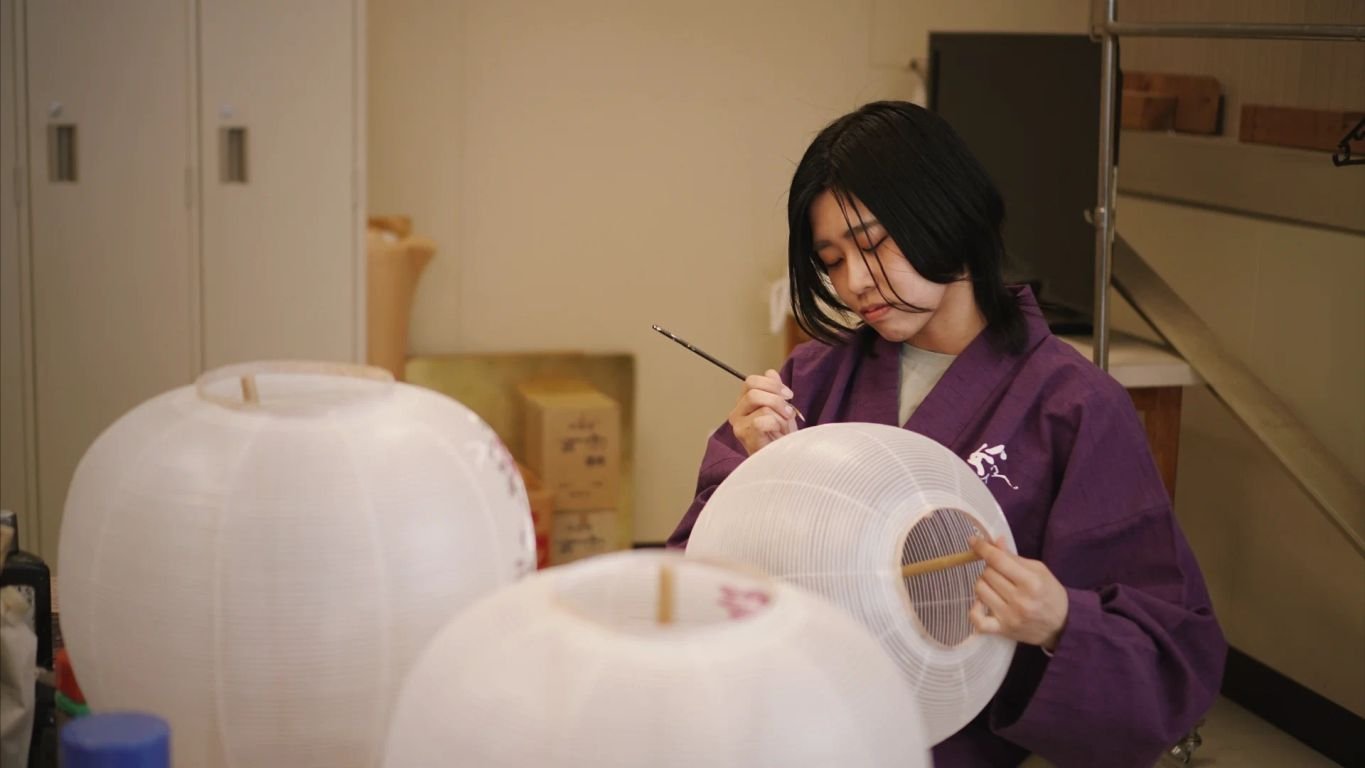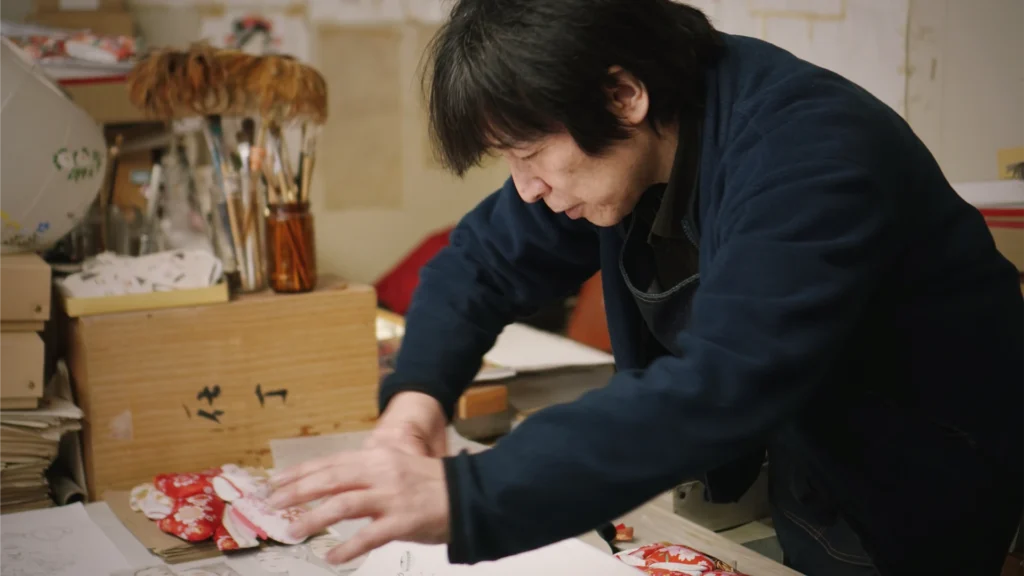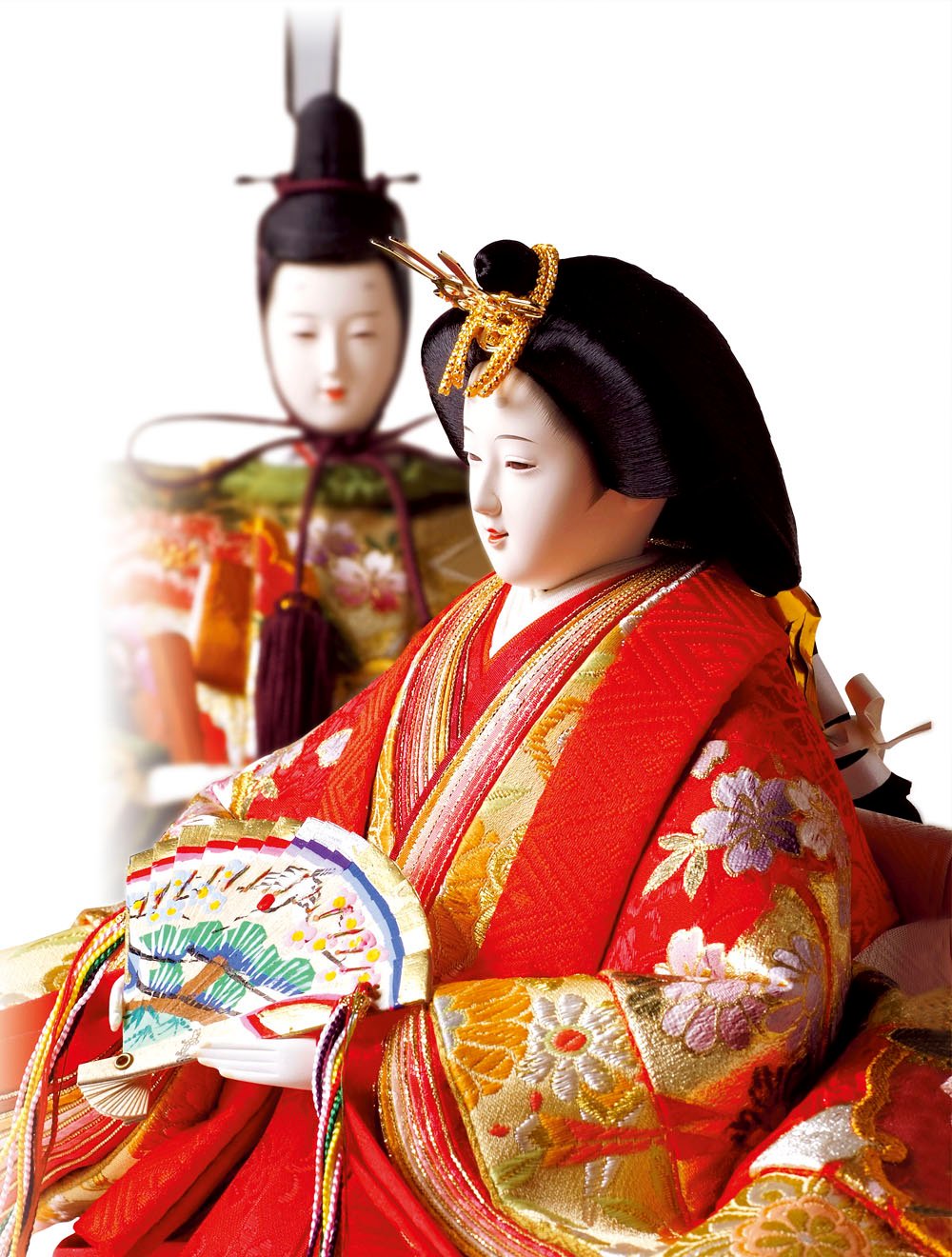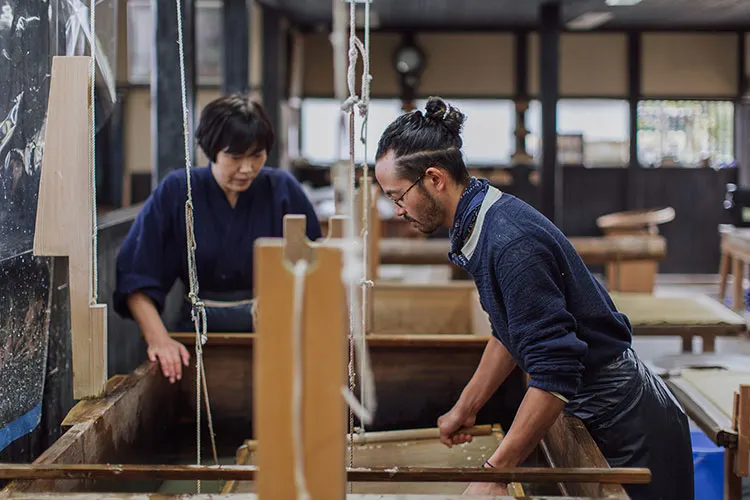Japanese traditional craftsmanship is truly something special. It’s not just about making things; it’s about a whole way of thinking, where quality and lasting beauty are super important. Artisans in Japan put so much care into their work, often using methods that have been around for hundreds of years. This focus on traditional Japanese craftsmanship means that every piece tells a story, connecting us to the past while still being useful today.
Key Takeaways
- Japanese traditional craftsmanship is built on a philosophy of making things well, with care and respect for materials.
- Craftspeople in Japan are super dedicated, often spending years perfecting their skills.
- Many Japanese crafts are made to last long, becoming cherished items passed down through families.
- Different regions in Japan are known for specific crafts, like knives from Takefu or paper from Echizen.
- These crafts show how art and everyday use can come together beautifully, making ordinary objects truly special.
The Enduring Philosophy of Japanese Craftsmanship
Japanese craftsmanship isn’t just about making things; it’s a deeply ingrained philosophy that values quality, dedication, and the preservation of tradition. For businesses looking to source authentic, high-quality Japanese crafts, understanding this philosophy is key to building trust and ensuring export readiness.

The Enduring Philosophy of Japanese Craftsmanship
Monozukuri: The Art of Making Things
Monozukuri, often translated as “the art of making things,” goes beyond mere production. It embodies a spirit of innovation, continuous improvement, and respect for materials. It’s about creating products that not only meet a need but also reflect the maker’s soul. This dedication to excellence sets Japanese crafts apart in the global market.
- Emphasis on quality over quantity.
- Constant pursuit of improvement (Kaizen).
- Respect for materials and the environment.
Monozukuri is more than just manufacturing; it’s a holistic approach that integrates design, technology, and craftsmanship to create products of lasting value. It’s a philosophy that Fujiki Crafts embraces in every piece we offer.
Shokunin: Dedication to Craft
The term shokunin refers to artisans who dedicate their lives to mastering a specific craft. These individuals possess not only technical skill but also a deep sense of pride and responsibility in their work. They are the guardians of tradition, passing down knowledge and techniques through generations. The shokunin are dedicated to manual work. They produce the same objects every day, passing on their techniques for a hundred years. They are people who can teach the new generations the technical aspects of very detailed work.
- Lifelong commitment to a single craft.
- Unwavering pursuit of perfection.
- Passing down skills to future generations.
Longevity and Heirloom Quality
Japanese crafts are designed to last. Durability isn’t just a feature; it’s a core principle. Items are often made to be repaired and passed down through generations, becoming cherished heirlooms. This focus on longevity translates to a higher perceived value and increased customer satisfaction.
- Use of high-quality, durable materials.
- Emphasis on repairability and maintenance.
- Timeless designs that transcend trends.
Consider these points when sourcing craft supplies from Japan. Understanding the philosophy behind the craft will help you better appreciate the value and quality of the products you’re offering. Ready to explore how Fujiki Crafts can help you source authentic Japanese craftsmanship? Visit our Japan craft website or contact us today to discuss your specific needs.
Mastery of Traditional Techniques
Japanese craftsmanship is more than just making things; it’s about perfecting techniques passed down through generations. For businesses looking to source authentic Japanese crafts, understanding these techniques is key to appreciating the value and quality of the products. Let’s explore some core areas.
Intricate Woodworking and Joinery
Woodworking in Japan is an art form. It’s not just about cutting wood; it’s about understanding the material and using joinery techniques that have been refined for centuries. These methods, like kumiko and sashimono, allow for seamless integration of wooden components without relying on nails or screws. This results in stronger, more durable, and aesthetically pleasing structures and objects.
Here’s a quick look at some key aspects:
- Miyadaiku: Shrine and temple carpentry, focusing on complex joinery.
- Sashimono: Furniture making, emphasizing precision and fit.
- Kumiko: Creating intricate patterns with small wooden pieces.
These techniques ensure longevity and a unique aesthetic, making them ideal for high-end business gifts or interior design projects.
The Art of Japanese Papermaking
Washi, or Japanese paper, is renowned for its strength and beauty. The process involves several steps, from harvesting the fibers to carefully drying the sheets. The result is a paper that’s not only beautiful but also incredibly durable. It’s used in everything from shoji screens to fine art prints.
Key features of washi:
- Made from long fibers, providing exceptional strength.
- Resistant to tearing and aging.
- Offers a unique texture and aesthetic appeal.
The beauty of washi lies in its simplicity and versatility. It’s a testament to the Japanese dedication to quality and craftsmanship. Its unique properties make it a great choice for archival purposes, special documents, or luxury packaging.
Advanced Dyeing Processes
Dyeing techniques in Japan are incredibly sophisticated. Methods like Oshima Tsumugi involve complex processes that can take months to complete. These techniques result in colors that are rich, fade-resistant, and deeply embedded in the fabric. The dedication to natural dyes and meticulous application sets these textiles apart.
Consider these dyeing methods:
- Mud Dyeing: Using local mud to achieve unique, earthy tones.
- Indigo Dyeing (Aizome): Creating deep blue hues with natural indigo.
- Shibori: Tie-dyeing techniques for intricate patterns.
These advanced dyeing processes ensure that the textiles retain their beauty and value for years to come. If you’re looking for textiles that stand out, consider these dyeing methods for your next project.
Interested in sourcing authentic Japanese crafts made with these techniques? Contact us today to discuss your needs and how Fujiki Crafts can help you find the perfect products.
Regional Excellence in Traditional Japanese Craftsmanship
Japan’s craftsmanship isn’t just a national treasure; it’s a collection of regional specialties, each with unique techniques and stories. For B2B buyers looking for authentic, high-quality Japanese goods, understanding these regional differences is key. Let’s explore some standout areas, focusing on their export readiness and suitability for business applications.

Regional Excellence in Traditional Japanese Craftsmanship
Echizen: A Hub of Artisanal Collaboration
Echizen, in Fukui Prefecture, is a powerhouse of traditional crafts. What makes Echizen special is the collaborative spirit. The region’s geography and resources have fostered a diverse range of artisans, from ceramicists to papermakers.
- Echizen washi: Known for its quality and durability, this paper has a history of over 1,500 years. It’s used in woodblock printing, calligraphy, and even modern design. Echizen’s papermakers invented Japan’s first watermarking technique.
- Collaborative production: The creation of a single wooden dresser can involve blacksmiths, lacquer artists, and carpenters.
- Ideal location: The region’s natural resources are ideal for craftsmen, such as ceramicists and papermakers.
Echizen’s success comes from its collaborative environment. Artisans work together, combining their skills to create exceptional products. This synergy preserves traditional techniques and embodies the spirit of monozukuri.
Takefu Knife Village: Forging Sharp Traditions
Takefu Knife Village is where blacksmiths uphold a 700-year heritage of knife-making. The village is famous for its high-quality kitchen knives, known for their sharpness and durability. These knives are popular both in Japan and internationally. They also make specialty knives, cutlery, and letter openers. Each piece is made by hand, from forging to polishing. Consider these Japanese knives for your business.
- 700-year heritage: Blacksmiths collaborate to uphold the region’s rich history.
- High-quality kitchen knives: Known for lasting sharpness and durability.
- Handcrafted: Each piece is lovingly made from forging to polishing.
Oshima Tsumugi: A Textile Legacy
Oshima Tsumugi is a silk fabric from Amami Oshima in Kagoshima Prefecture. It’s known for its sophisticated patterns and intensive production process. Making a single piece can take over a year. The process involves a unique dyeing process using local mud. This gives the fabric rich, fade-resistant colors. It’s considered one of Japan’s most valuable craft items. The fabric is light, warm, flexible, and keeps its shape. The designs are subtle and elegant, often with geometric patterns. Oshima Tsumugi is a textile legacy worth exploring.
- Unique dyeing process: Local mud is used to achieve rich, fade-resistant colors.
- Valuable craft item: Celebrated for its subtle yet elegant designs.
- Light, warm, and flexible: The fabric maintains its shape.
We at Fujiki Crafts are here to help you source the best of Japanese regional craftsmanship. Contact us to discuss your specific needs and how we can support your business goals.
The Fusion of Art and Functionality
Bridging Art and Design in Japanese Culture
Japanese culture doesn’t separate art and design like we sometimes do. It’s more like they’re two sides of the same coin. Think about it: a tea bowl isn’t just a thing to drink tea from; it’s a piece of art meant to be appreciated. This idea is super important when we talk about traditional crafts. It’s not just about making something that works; it’s about making something beautiful that also works well. This is what makes Japanese craftsmanship so special.
Adapting Ancient Techniques for Modern Living
So, how do you take something old and make it new again? That’s the challenge for a lot of craftspeople today. It’s not enough to just keep making the same old stuff. You’ve got to find ways to make it relevant for today’s world. Here’s how some artisans are doing it:
- New Materials: Using modern materials while keeping the traditional techniques.
- New Designs: Creating new designs that still honor the old ways.
- New Uses: Finding new uses for traditional crafts in modern homes and businesses.
It’s a balancing act. You want to respect the past, but you also want to create something that people will actually use and appreciate today. It’s about evolution, not just preservation.
The Aesthetic Appeal of Everyday Objects
Ever notice how even the simplest things in Japan seem to have a certain beauty to them? It’s not an accident. There’s a real focus on making everyday objects not just useful, but also pleasing to the eye. This is where the Japanese concept of wabi-sabi comes in – finding beauty in imperfection. Think about a handmade ceramic mug. It might not be perfectly symmetrical, but that’s part of its charm. It’s a reminder that it was made by a person, not a machine. This focus on aesthetics can set your business apart. If you’re looking to source unique, high-quality items that blend art and function, reach out to us. We’re here to help you find the perfect pieces for your needs.
Preserving Cultural Heritage Through Craft
Passing Down Generations of Skill
Japanese craftsmanship isn’t just about making things; it’s about passing down knowledge. Think of it as a relay race where each generation carries the baton of skill and technique, adding their own unique touch before handing it off. This ensures that the essence of the craft remains alive, evolving yet rooted in tradition. Fujiki Crafts plays a vital role in this process, actively supporting artisans and workshops that prioritize apprenticeship and mentorship programs.
Consider these key aspects:
- Apprenticeship Programs: Many workshops have formal apprenticeship programs, lasting several years, where young artisans learn directly from masters.
- Family Businesses: Craft traditions are often maintained within families, with skills and knowledge passed down through generations.
- Community Workshops: Some communities have workshops where artisans share their skills with locals, ensuring the craft’s survival.
Preserving these skills is not just about maintaining the past; it’s about investing in the future. By supporting these artisans, we ensure that these unique skills continue to thrive.
The Significance of Traditional Dolls
Traditional Japanese dolls are more than just toys; they’re cultural artifacts. Each doll represents a story, a tradition, or a wish for good fortune. From Hina dolls displayed during Girl’s Day to Musha dolls celebrating Boy’s Day, these dolls are integral to Japanese cultural identity. Fujiki Crafts recognizes the importance of these dolls and works with artisans who are dedicated to preserving their intricate designs and the stories they tell. Consider the following table:
| Doll Type | Significance |
|---|---|
| Hina Dolls | Girl’s Day celebration, good fortune for girls |
| Musha Dolls | Boy’s Day celebration, strength and courage |
| Kokeshi Dolls | Simple wooden dolls, regional variations |
| Daruma Dolls | Goal setting and perseverance |
Craft as a Reflection of Japanese Identity
Japanese craft is deeply intertwined with the nation’s identity. The materials used, the techniques employed, and the motifs depicted all reflect the values, beliefs, and history of the Japanese people. From the minimalist aesthetic of Zen gardens to the intricate patterns of kimono fabrics, craft embodies the spirit of Japan. Fujiki Crafts champions this connection, showcasing crafts that tell a story about Japan’s past, present, and future. We believe that by supporting these crafts, we are supporting the preservation of Japanese identity. Consider these points:
- Materials: The use of natural materials like wood, bamboo, and silk reflects a deep respect for nature.
- Techniques: Traditional techniques like urushi lacquering and yuzen dyeing are passed down through generations, preserving cultural knowledge.
- Motifs: Common motifs like cherry blossoms, cranes, and Mount Fuji symbolize beauty, longevity, and national pride.
Interested in learning more about how Japanese craft can enhance your business or export opportunities? Contact us today to explore our catalog and discuss potential collaborations. We are here to help you explore traditional crafts and connect with the heart of Japanese culture.
Collaborative Spirit in Japanese Craftsmanship
Japanese craftsmanship isn’t just about individual skill; it’s often a symphony of collaboration. At Fujiki Crafts, we see this synergy as a key to producing exceptional, export-ready products. Let’s explore how this collaborative spirit works and why it matters for your business.
Synergy Among Diverse Artisans
Think of it like this: a single product might pass through the hands of several specialists, each bringing unique skills to the table. For example, creating a wooden dresser could involve blacksmiths crafting the hardware, lacquer artists applying the finish, and carpenters assembling the structure. This division of labor, combined with shared expertise, results in a higher quality product than any single artisan could produce alone. This collaborative environment is a cornerstone of Japanese craftsmanship.
Community-Driven Craft Production
Craft production in Japan is often deeply rooted in local communities. Artisans frequently work nearby, sharing knowledge and resources. This creates a supportive ecosystem where skills are passed down through generations, and innovation is encouraged. This community focus ensures the longevity and authenticity of traditional techniques. Consider Takefu Knife Village, where blacksmiths collaborate to maintain their 700-year knife-making heritage. This collaborative spirit is what makes their high-quality kitchen knives so special.
Fostering Innovation Through Shared Knowledge
Collaboration isn’t just about maintaining tradition; it’s also about driving innovation. When artisans share their knowledge and techniques, they can experiment with new ideas and approaches. This leads to the development of new products and the refinement of existing ones. This constant exchange of ideas is what keeps Japanese craftsmanship relevant and competitive in the modern market. It’s about adapting ancient techniques for modern living.
The collaborative nature of Japanese craftsmanship is a key factor in its enduring success. By working together, artisans can achieve a level of quality and innovation that would be impossible to achieve alone. This spirit of collaboration is something that we at Fujiki Crafts deeply value and strive to promote in all our activities.
Interested in sourcing unique, high-quality crafts made with this collaborative spirit? Contact us to explore partnership opportunities.
Japanese craftspeople often work together, sharing their skills and helping each other make amazing things. This teamwork is a big part of why their crafts are so special. Want to see more about how they create these beautiful items? Visit our website to learn about the unique spirit of Japanese craftsmanship.
Conclusion
So, as we wrap things up, it’s pretty clear that traditional Japanese craftsmanship is something special. It’s not just about making things; it’s about a whole way of thinking. Artisans put so much care into every piece, using methods that have been around for ages. They really connect with their materials, and you can see that in the finished product. These items aren’t just pretty; they’re made to last, often becoming family treasures. It’s a cool mix of old ways and new ideas, and it keeps getting better. If you’re looking for something truly unique and well-made, Japanese crafts are a great choice. They show off a long history of skill and dedication.
Read more: Exploring the Beauty of Japanese Traditional Goods





